Q&A August
A monthly Digest feature celebrating 20 years of ANAT Synapse, where we ask an ANAT Synapse alumnus about their place within the art + science + technology network.
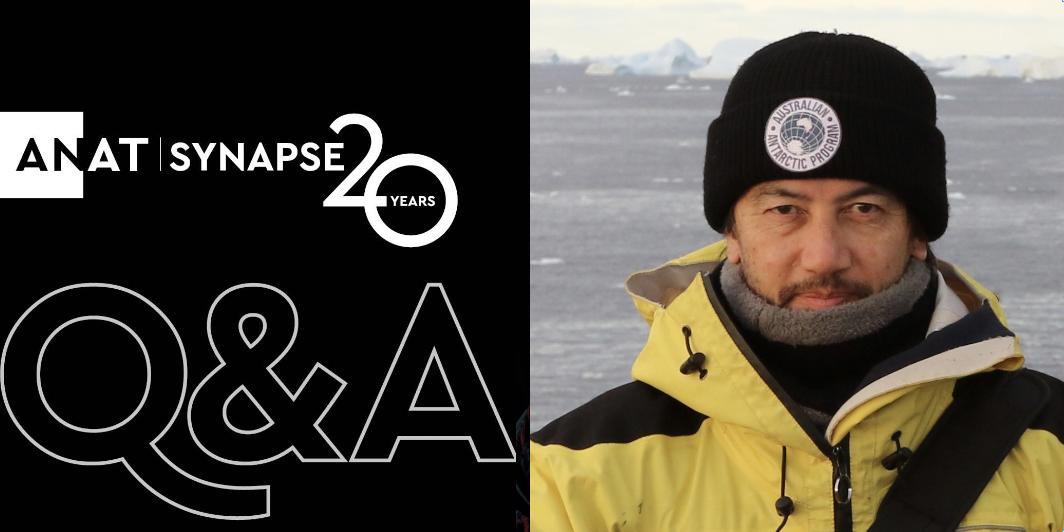
John McCormick. Photo by Marty Passingham.
John McCormick
John McCormick is a technology based artist with a major interest in movement. John has collaborated on works worldwide, including at ISEA, ZERO1SJ, SIGGRAPH, Melbourne Festival, Siggraph Asia, Ars Electronica Futurelab, Tokyo International Forum and ArtScience Museum Singapore. John’s current works investigate the developing relationships between human, digital and cyber-physical systems incorporating VR, AR, motion capture, AI, dance and robotics. John is a former Australia Council Arts Fellow, ANAT Synapse residency recipient at the Deakin Motion.Lab collaborating with Professor Kim Vincs, an Australian Antarctic Arts Fellow supported by ANAT and the Australian Antarctic Division and visiting artist at Ars Electronica Futurelab. John is currently acting director of the Centre for Transformative Media Technologies at Swinburne University of Technology.
Can you tell us about your ANAT Synapse residency and where the research has led you?
I have been lucky enough to have had both an ANAT Synapse residency and an ANAT supported Australian Antarctic Arts Fellowship. The ANAT Synapse residency was at the Deakin University Motion.lab in 2015, collaborating with Professor Kim Vincs, dancer Steph Hutchison and researchers at the Institute for Intelligent Systems Research and Innovation (IISRI). We worked on developing methods for translating dance movement into haptic experiences that enabled blind and vision impaired audience members and artists to experience dance information through touch. We used motion capture to enable the dancer’s movement through space to be transferred through a haptic cushion to the participant’s back and also used a small humanoid robot to mimic the dancer’s actions allowing an experience of the postures and movement dynamics of the dance. This was early in my explorations with robots which I have continued to develop into the present. I’ve been involved with dance for many decades and am still interested in how dance can be used to explore structures for choreographing relationships with digital and physical systems including robots and shared learning of movement and interaction possibilities.
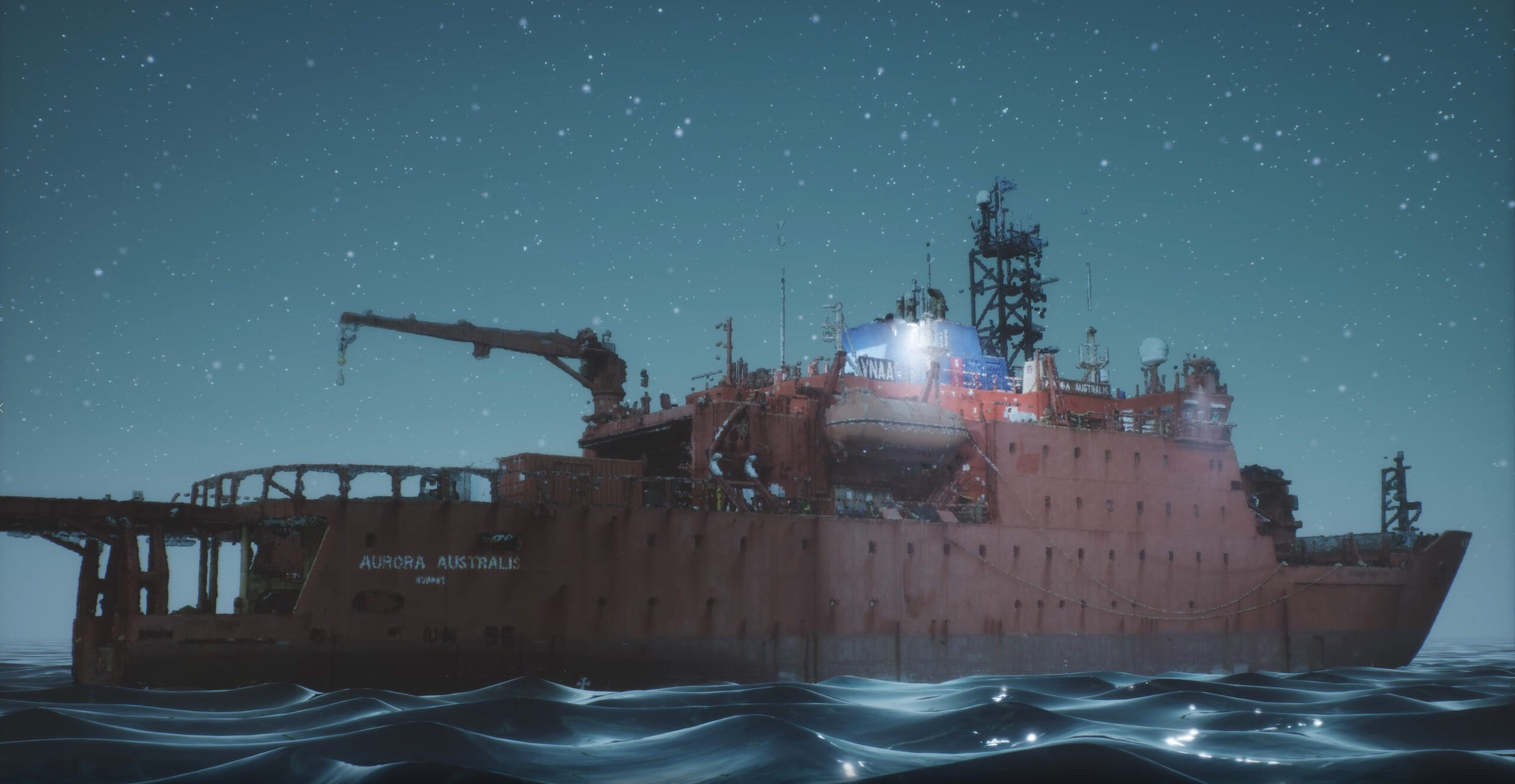
3D model of the Aurora Australis made from drone scans for the VR artwork Aurora Australis Ultimo Choro.
For the Australian Antarctic Arts Fellowship I travelled with fellow artist and long-time collaborator Adam Nash on the last voyage of the RSV Aurora Australis to the Antarctic continent. The “Orange Roughy” as it is affectionally known was to be removed from service to make way for the new ice breaker the RSV Nuyina. We set out to scan the ship and expeditioners to create a dataset we could use to build an interactive 3D experience based on the voyage. The on-board experience was so rich and the people so interesting and interested in what we were doing that we were compelled to capture as much as we could using many formats: lidar scans, video, 360 video, ambisonic sound recordings, drone footage, motion capture, depth sensor scans, interviews and lots of photos. We also helped out with many of the scientific experiments that were undertaken along the voyage. We were also lucky enough to spend time on Davis and Mawson stations travelling over the ice to the remote Henderson and Rumdoodle huts. It was truly extraordinary and we regularly commented on how we’d see something amazing one day and something more amazing the next. We have been slowly working through the enormous amount of material, creating a multi-screen video installation “Antarctic Breaking,” a VR experience “Aurora Australis Ultimo Choro,” a 3D stereo film installation “Last Dance Orange Roughy,” an online virtual tour of the ship and a new interactive work for the 2024 Australian Antarctic Festival.
What is the biggest challenge of being an interdisciplinary artist?
The challenges for interdisciplinary artists are probably quite varied. One of the challenges for me is the time it takes to understand the materials being used. With the current robotics work, designing and constructing robot bodies takes time and then the software development can take even longer before you get to the stage of being able to realise artistic concepts involving humans and robots. Collaboration becomes incredibly rewarding if not essential. Finding collaborators who have aligned sensibilities, whether artist, scientist or engineer, can challenge and extend your work and free you to concentrate on emerging ideas or technological potentials.
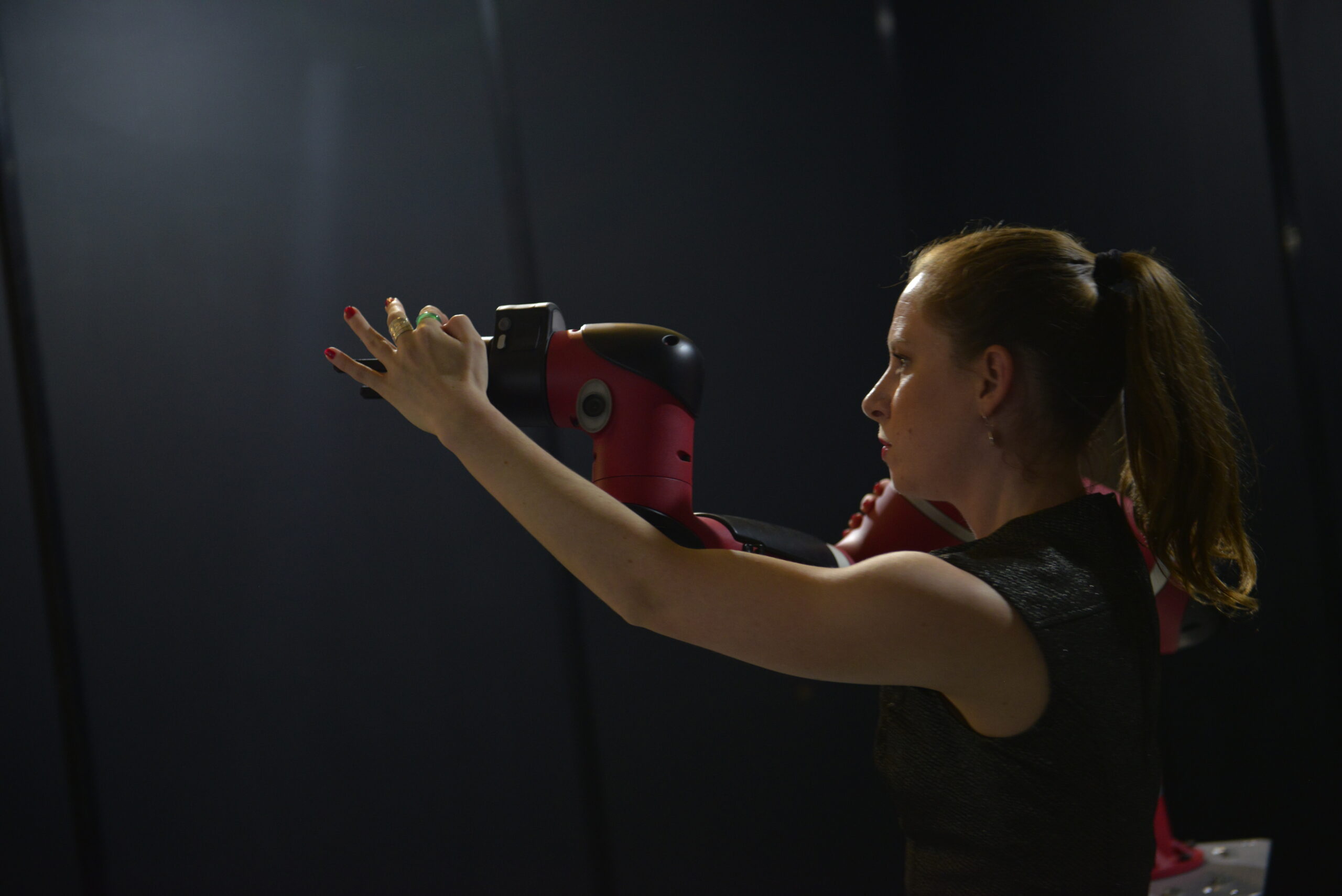
Steph Hutchison performing with Sawyer robot in Eve of Dust, a collaboration with John McCormick, Adam Nash and Steph Hutchison for Siggraph Asia Art Gallery, Tokyo International forum, Japan, 2019. Photo by John McCormick.
What kind of mentor-mentee relationships have you experienced throughout your years of practice? Is there any particular mentor or mentee that stood out for you?
Professor Scott delaHunta has been a great mentor and friend since meeting while I was performing in Amsterdam with Hellen Sky and Company In Space. Scott organised a number of pivotal dance technology research projects across Europe that I was privileged to be part of. I remember the time I spent with Paul Bourke at the Centre for Astrophysics and Supercomputing at Swinburne University and later at University of Western Australia and how accessible he made the visualisation technology he was developing to artists and the community. His work was truly inspiring. Collaborating on the ANAT Synapse residency with Professor Kim Vincs was extremely enlightening. Kim helped me understand how artistic practice methods generate new knowledge that can be directly applied to areas outside of the arts. I find myself applying this approach to nearly all my current work including how robots can learn from human demonstration using movement and dance structures and how embodiment greatly impacts our view of the world, something that robotics and AI can learn from movement experts such as dancers.
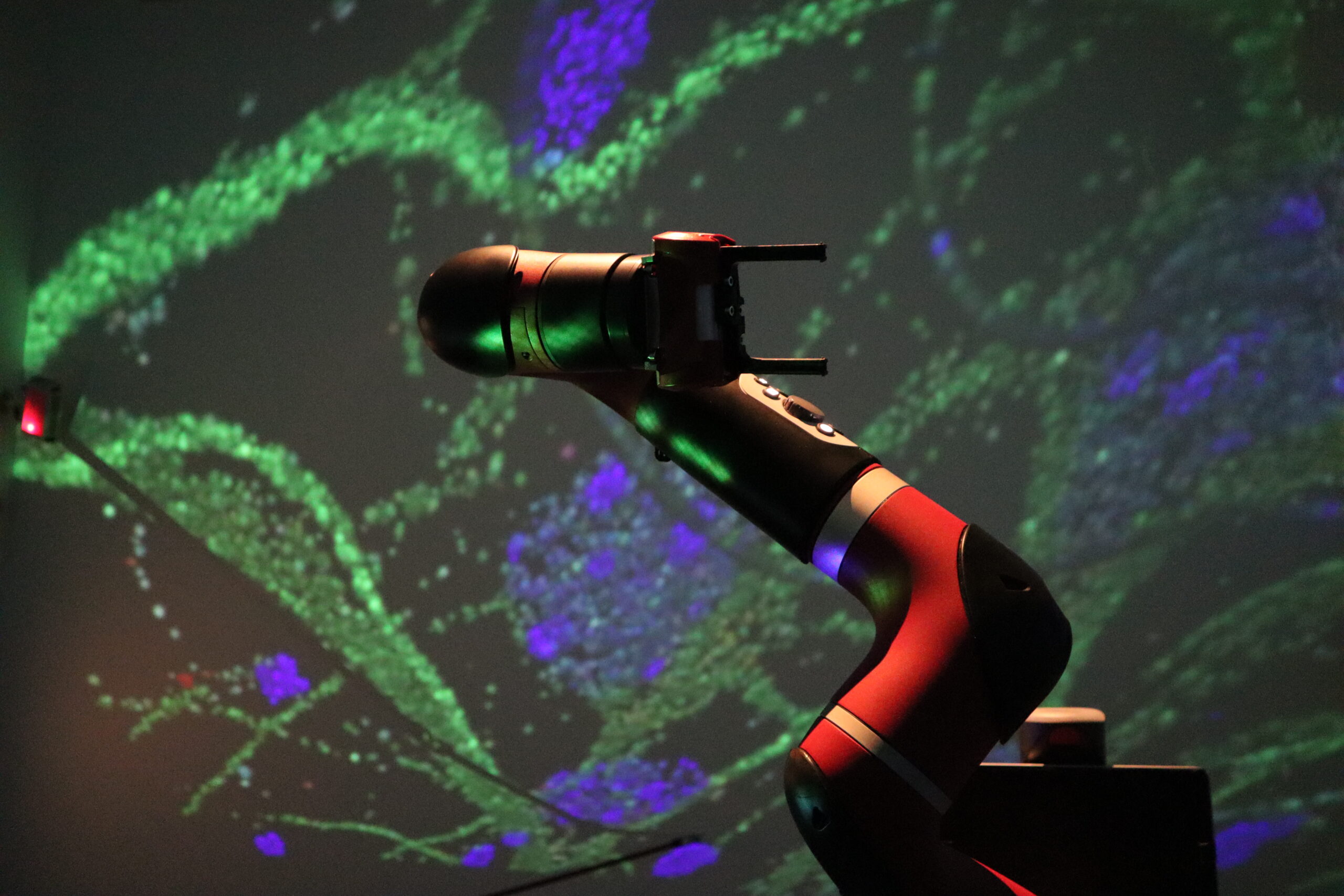
Neuron Conductor is a hybrid biological-machine generated artwork that sees spiking patterns of a biological brain controlling a robot arm to conduct a generative musical score. Photo by John McCormick.
As an interdisciplinary artist, who and what are your biggest influences?
The biggest influences on my work and development have been the artists and non-artists (but still creative) I have collaborated with over many years. There is a lot of peer mentoring that is ongoing within any arts project. I’ve found that once I find like-minded people I trust and who I can depend on, it is a pleasure to continue working and discovering with them across projects. I am currently an investigator within the Australian Cobotics Centre which looks towards collaborative robots for solutions in manufacturing. This really does push me outside my comfort zone, though the range of backgrounds of the other investigators is extremely wide coming from robotics, AI, design, social sciences, education, the arts and more. Having such a diverse range of perspectives on these large research areas that will significantly affect society and culture is inspirational and pushes me to think more deeply about the ramifications of my own work. I can also see how my artistic practice can directly contribute to these efforts through better understanding of the types of relationships emerging robots and AI can have with people and the environment.
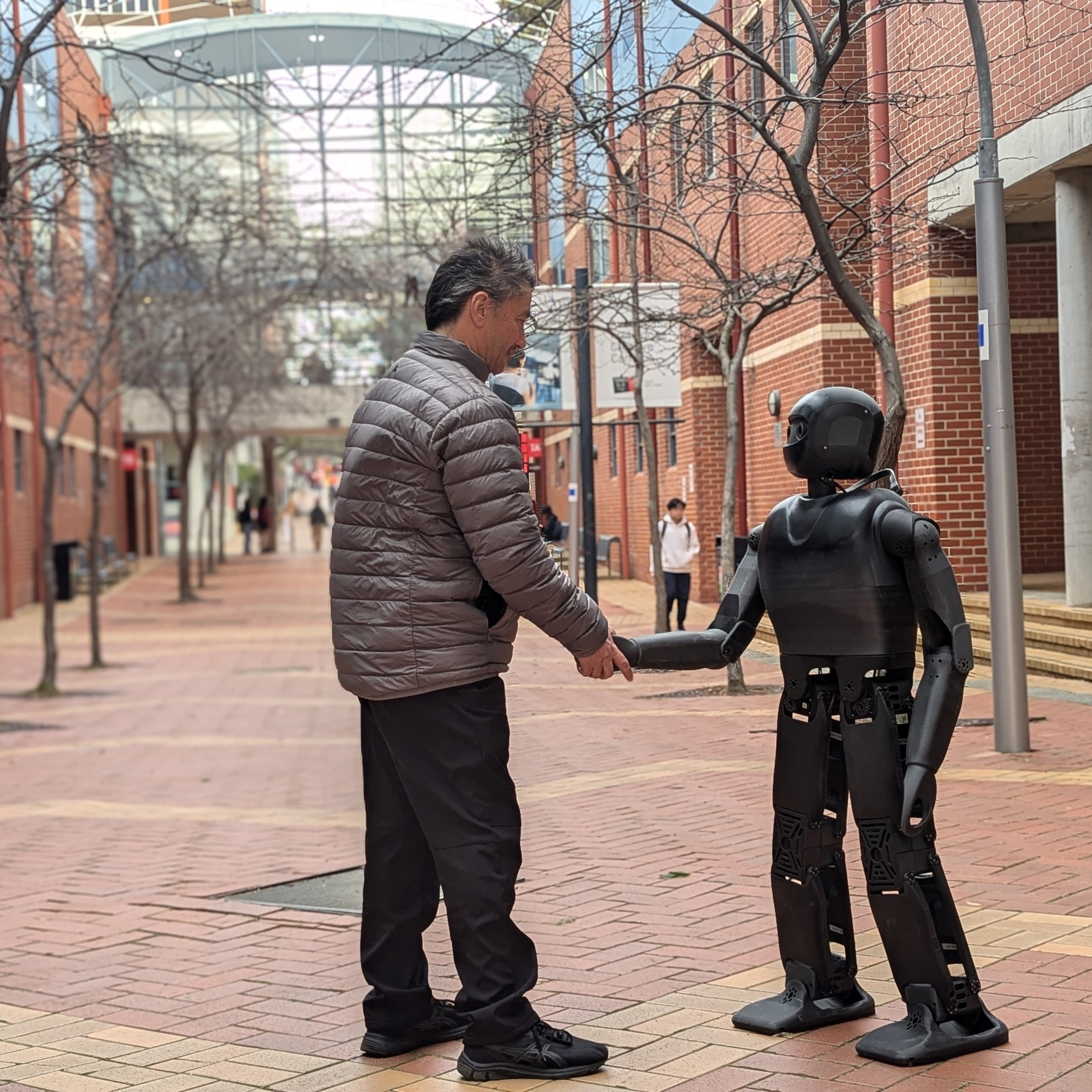
Investigations into human robot performance and interaction in social and cultural contexts. Photo by Jagan Charjee Pyaraka.
What are you working on at the moment?
Currently I’m working on a new work for the 2024 Australian Antarctic Festival in Hobart with Adam Nash. We are using some of the incredible video footage of moving through the Antarctic environments as sources for 3D volumetric projections that will fill the Salamanca Arts Centre gallery. Exhibiting the work in Hobart is very exciting as it was the home of the Aurora Australis. Going back to some of our earlier interactive works such as “Reproduction” which we developed at Ars Electronica Futurelab in 2009, we are incorporating the visitor’s movement as elements that impact the nature of the environments. Adam is generating a sound environment from the amazing ambisonic sound recordings taken along the voyage.
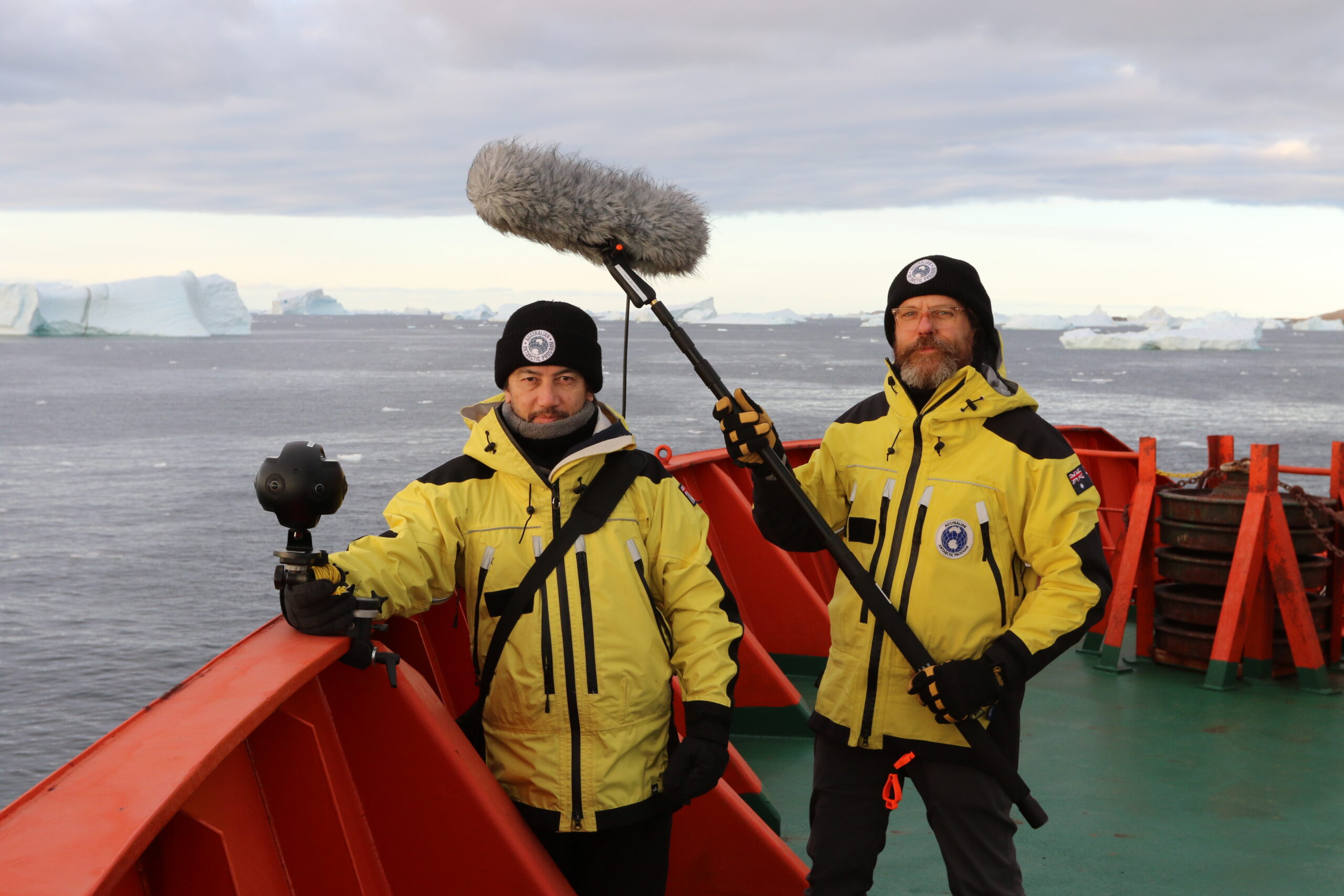
John McCormick and Adam Nash on the RSV Aurora Australis on its last voyage to the Antarctic. Photo by Marty Passingham.
I’m also working on a new robot artwork that looks at using machine learning to enhance the movement of a large humanoid robot based on motion captured dance. Traditional programming of a robot’s movement is time consuming and doesn’t leave much room for surprises or capacity to respond to the unexpected. I’m investigating guided machine learning as a way to teach a robot to perform dance movements. Perhaps in the future it will also learn to improvise with a human dancer. The aim is to develop more nuanced performative relationships between a human and robot dancer.
Both of these new works are following artistic trajectories that have been enabled and supported by my ANAT residencies. I can’t overstate how pivotal the experiences and opportunities have been to my creative practice.